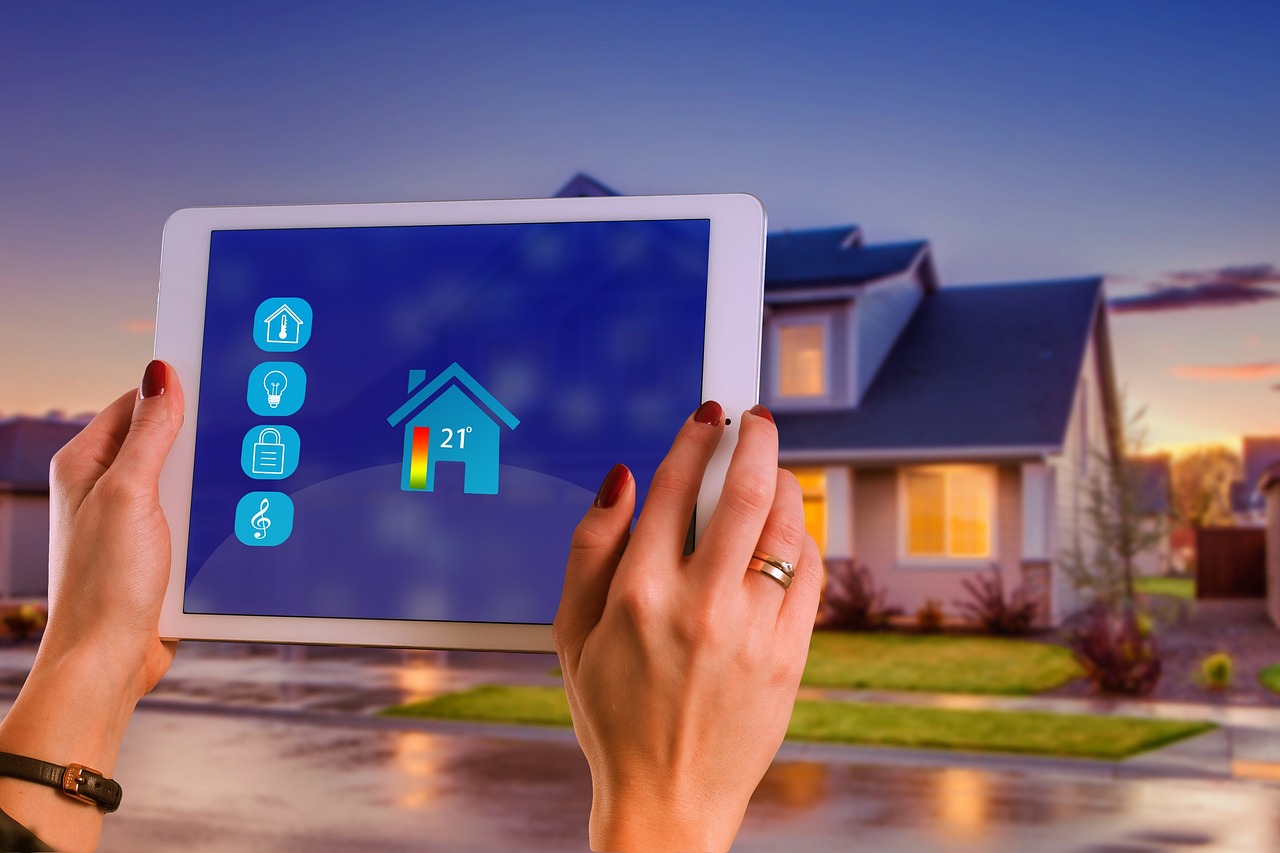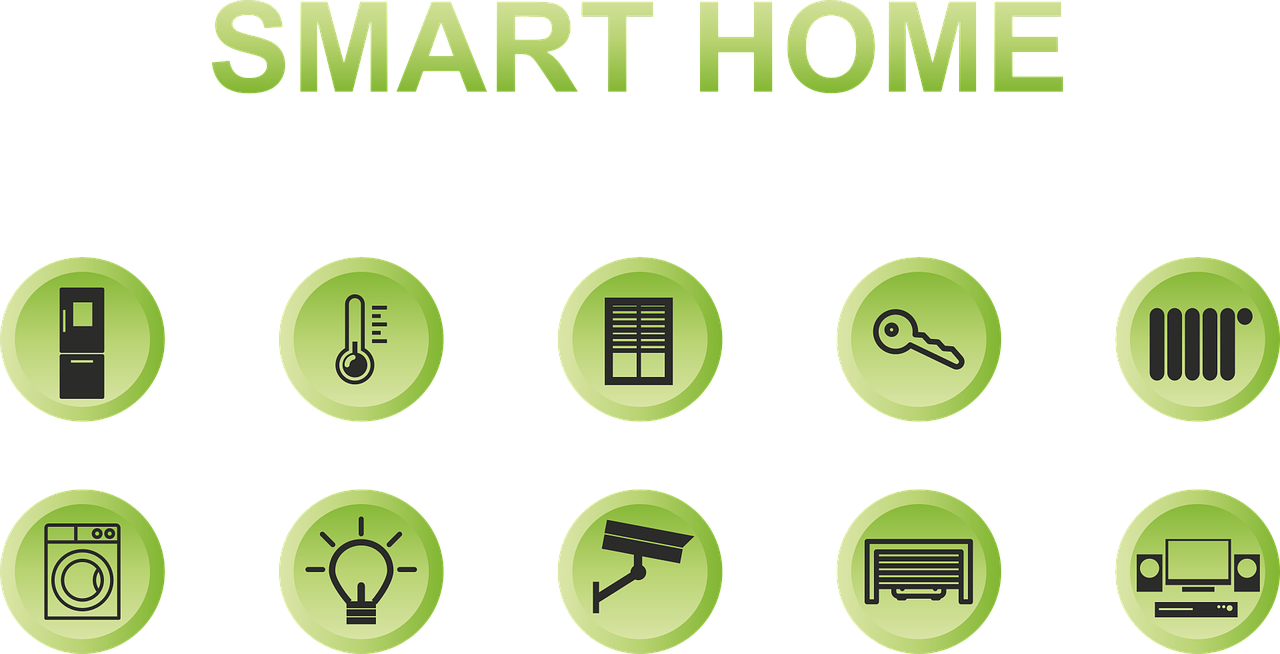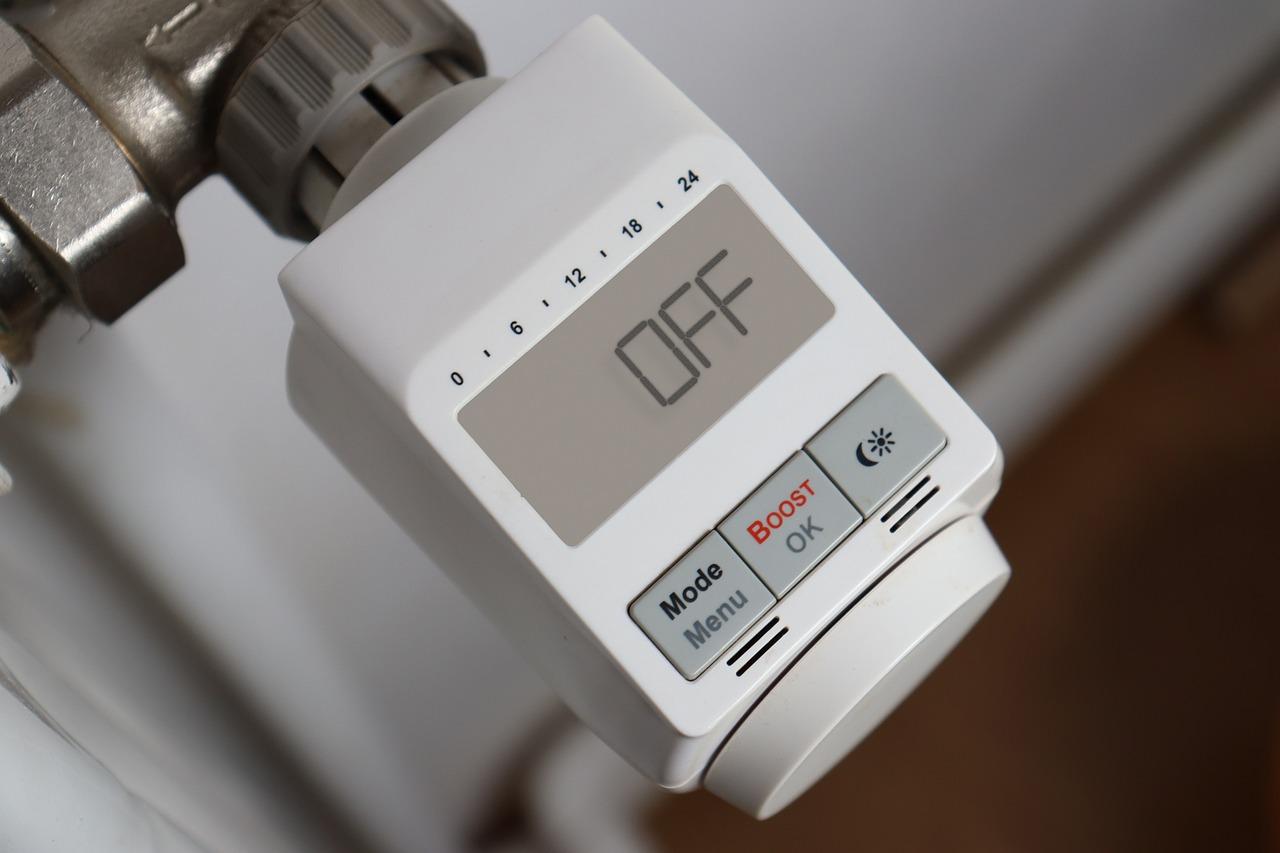Understanding Smart Thermostats
Smart thermostats have revolutionized home climate control, offering advanced features that go far beyond the capabilities of traditional thermostats. These intelligent devices are a cornerstone of modern home automation systems, providing precise temperature regulation, energy efficiency, and seamless integration with other smart home devices. As we delve into the world of smart thermostats, we’ll explore how they’re transforming the way we manage our home environments.
Features of Smart Thermostats
Smart thermostats come equipped with a range of innovative features designed to enhance comfort, convenience, and energy efficiency:
- Remote Control: Adjust temperature settings from anywhere using smartphone apps
- Learning Capabilities: Adapt to user preferences and schedules over time
- Energy Monitoring: Track energy usage and provide detailed reports
- Occupancy Sensing: Detect when someone is home and adjust settings accordingly
- Weather Integration: Factor in local weather forecasts for optimal temperature control
- Multi-Zone Control: Manage different temperature zones within the home
- Voice Control: Compatible with voice assistants like Alexa and Google Assistant
- Geofencing: Use smartphone location to trigger temperature changes
- HVAC System Monitoring: Alert homeowners to potential HVAC issues
Popular smart thermostat brands like Nest, Ecobee, and Honeywell offer these features in varying combinations, allowing homeowners to choose the best fit for their needs.
Benefits of Smart Thermostats
Smart thermostats offer numerous advantages over traditional thermostats, enhancing both comfort and energy efficiency:
| Aspect | Traditional Thermostats | Smart Thermostats |
|---|---|---|
| Temperature Control | Manual adjustments | Automated, learning-based control |
| Energy Efficiency | Limited scheduling options | Advanced energy-saving features |
| Remote Access | None | Full control via smartphone apps |
| Integration | Standalone device | Integrates with home automation systems |
| Data Insights | None | Detailed energy usage reports |
| Maintenance | No system monitoring | HVAC system health alerts |
| User Experience | Basic interface | Intuitive touchscreen or app interface |
These benefits make smart thermostats an attractive option for homeowners looking to modernize their climate control systems and reduce energy consumption.
Integration with Home Automation Systems
The true power of smart thermostats is realized when they are integrated into broader home automation systems. This integration allows for seamless coordination between various smart devices, creating a cohesive and efficient smart home ecosystem. By connecting thermostats with other smart home components, homeowners can achieve unprecedented levels of comfort, convenience, and energy efficiency.
Compatibility with Home Automation Platforms
Smart thermostats are designed to work with a variety of popular home automation platforms, enabling users to create comprehensive smart home setups. Some of the key platforms that support smart thermostat integration include:
- Amazon Alexa: Voice control and routines
- Google Home: Integration with Google Assistant and Nest ecosystem
- Apple HomeKit: Seamless integration with Apple devices and Siri
- Samsung SmartThings: Comprehensive home automation control
- IFTTT (If This Then That): Custom automation recipes
- Wink: Hub-based smart home control
- Control4: Professional-grade home automation systems
These platforms allow smart thermostats to communicate and coordinate with other smart devices such as:
- Smart lighting systems
- Window blinds and shades
- Security cameras and sensors
- Smart locks
- Air quality monitors
- Ceiling fans
By leveraging these compatibilities, homeowners can create sophisticated automation scenarios that enhance comfort and energy efficiency.
Creating Automated Routines
One of the most powerful features of integrated smart thermostats is the ability to create automated routines that coordinate multiple devices and actions. These routines can significantly enhance comfort, convenience, and energy efficiency.
| Scenario | Automated Routine |
|---|---|
| Morning Wake-Up | 1. Gradually increase temperature<br>2. Open smart blinds<br>3. Turn on lights<br>4. Start coffee maker |
| Leaving Home | 1. Set thermostat to energy-saving mode<br>2. Turn off lights<br>3. Close blinds<br>4. Arm security system |
| Vacation Mode | 1. Set thermostat to minimum required temperature<br>2. Randomize lighting schedule<br>3. Activate security cameras<br>4. Pause smart appliance schedules |
| Bedtime | 1. Lower temperature for optimal sleep<br>2. Dim lights gradually<br>3. Close blinds<br>4. Activate night mode on security system |
These automated routines demonstrate how smart thermostats can work in concert with other devices to create a truly intelligent and responsive home environment.
Energy Efficiency and Savings

One of the primary advantages of smart thermostats is their ability to significantly enhance energy efficiency and generate cost savings for homeowners. By leveraging advanced algorithms, learning capabilities, and integration with other smart home devices, these thermostats optimize heating and cooling patterns to reduce energy consumption without sacrificing comfort.
Energy Monitoring and Reporting
Smart thermostats offer comprehensive energy monitoring and reporting features that provide valuable insights into home energy usage:
- Real-time Energy Tracking: Monitor current energy consumption and costs
- Historical Data Analysis: Review past energy usage patterns and trends
- Personalized Energy Reports: Receive detailed breakdowns of energy consumption
- Energy-saving Recommendations: Get tailored suggestions for improving efficiency
- Goal Setting: Set and track energy-saving goals
- Comparative Analysis: Compare energy usage with similar homes in the area
- Peak Usage Alerts: Notifications for high-energy consumption periods
These features empower homeowners to make informed decisions about their energy usage, leading to more efficient practices and lower utility bills.
Smart Thermostats and HVAC Systems
The integration of smart thermostats with HVAC systems can lead to significant improvements in performance and efficiency:
| Aspect | Before Smart Thermostat | After Smart Thermostat |
|---|---|---|
| Energy Consumption | Baseline usage | 10-15% reduction on average |
| Temperature Consistency | Fluctuations throughout the day | Stable, optimized temperatures |
| System Runtime | Longer, less efficient cycles | Shorter, more efficient cycles |
| Maintenance | Reactive, based on issues | Proactive, based on system monitoring |
| User Awareness | Limited insight into system performance | Detailed performance data and alerts |
According to the U.S. Department of Energy, homeowners can save up to 10% a year on their heating and cooling costs by turning their thermostat back 7°-10°F for 8 hours a day from its normal setting. Smart thermostats automate this process, ensuring optimal energy savings without manual intervention.
Enhancing Comfort and Convenience
Smart thermostats go beyond mere temperature control, offering a range of features that significantly enhance home comfort and convenience. By leveraging advanced technologies and user-friendly interfaces, these devices create a more personalized and responsive living environment.
Remote Access and Control
One of the most appreciated features of smart thermostats is the ability to control them remotely through mobile applications. This functionality offers several benefits:
- Pre-arrival Temperature Adjustment: Set ideal temperature before returning home
- Vacation Mode Management: Easily adjust settings while away
- Real-time Monitoring: Check home temperature and humidity levels anytime
- Instant Adjustments: Make immediate changes in response to weather shifts
- Multiple Property Control: Manage thermostats across several properties
- Energy Usage Tracking: Monitor energy consumption on-the-go
- Alert Notifications: Receive warnings about extreme temperatures or system issues
Leading smart thermostat apps offer intuitive interfaces and comprehensive control options, making it easy for users to manage their home climate from anywhere.
Personalized Climate Settings
Smart thermostats excel at creating personalized climate settings tailored to individual preferences and routines:
| User Profile | Morning | Day | Evening | Night |
|---|---|---|---|---|
| Work-from-Home | 68°F at 7 AM | 72°F, 9 AM – 5 PM | 70°F, 5 PM – 10 PM | 66°F, 10 PM – 7 AM |
| Active Family | 70°F at 6 AM | 68°F, 8 AM – 3 PM | 72°F, 3 PM – 9 PM | 67°F, 9 PM – 6 AM |
| Night Owl | 66°F, 12 AM – 9 AM | 70°F, 9 AM – 6 PM | 72°F, 6 PM – 12 AM | 68°F, 12 AM – 9 AM |
| Energy Saver | 64°F, 11 PM – 6 AM | 68°F, 6 AM – 9 AM | 66°F, 9 AM – 5 PM | 70°F, 5 PM – 11 PM |
These personalized settings ensure that each household member experiences their ideal comfort level while optimizing energy usage. The learning capabilities of smart thermostats allow them to refine these settings over time based on user behavior and preferences.
Security and Privacy Considerations

While smart thermostats offer numerous benefits, their connectivity and data collection capabilities also raise important security and privacy concerns. As these devices become more integrated into our homes, it’s crucial to address potential vulnerabilities and ensure the protection of sensitive information.
Ensuring Data Security
To safeguard the security of data collected and transmitted by smart thermostats, homeowners should follow these best practices:
- Use Strong, Unique Passwords: Create complex passwords for thermostat accounts and Wi-Fi networks
- Enable Two-Factor Authentication: Add an extra layer of security to account logins
- Keep Firmware Updated: Regularly update thermostat firmware to patch security vulnerabilities
- Secure Home Network: Use WPA3 encryption and consider setting up a separate IoT network
- Disable Unnecessary Features: Turn off features that aren’t being used to reduce potential entry points
- Monitor Connected Devices: Regularly review and remove unauthorized devices from the network
- Choose Reputable Brands: Opt for thermostats from manufacturers with strong security track records
- Review Privacy Policies: Understand how the thermostat manufacturer handles and protects user data
- Use VPN for Remote Access: Employ a VPN when accessing the thermostat remotely for added security
Implementing these measures can significantly reduce the risk of unauthorized access and data breaches.
Privacy Concerns and Solutions
Smart thermostats collect a wealth of data about home occupancy and energy usage, which can raise privacy concerns. Here’s a look at common issues and potential solutions:
| Privacy Concern | Solution |
|---|---|
| Data Collection | Review and adjust data sharing settings in the thermostat app |
| Third-Party Access | Carefully vet integrations and limit access to necessary features only |
| Location Tracking | Disable geofencing features if not needed or use alternative triggers |
| Voice Assistant Integration | Use mute buttons on connected speakers when privacy is required |
| Energy Company Data Sharing | Opt-out of data sharing programs if available and not desired |
| Selling of Anonymized Data | Choose manufacturers with transparent data policies and opt-out options |
By being aware of these concerns and taking proactive steps to address them, homeowners can enjoy the benefits of smart thermostats while maintaining their privacy and security.
Future Trends in Smart Thermostats
The realm of smart thermostats continues to evolve rapidly, with emerging technologies and expanding smart home ecosystems driving innovation. As we look to the future, several exciting trends are poised to shape the next generation of these intelligent climate control devices.
AI and Machine Learning Integration
Artificial Intelligence (AI) and Machine Learning (ML) are set to play an increasingly significant role in enhancing smart thermostat functionalities:
- Predictive Climate Control: Anticipate temperature needs based on historical data and external factors
- Advanced Occupancy Detection: More accurately determine home occupancy without relying on motion sensors
- Natural Language Processing: Improve voice control capabilities for more intuitive interactions
- Personalized Energy Optimization: Develop highly tailored energy-saving strategies for each household
- Proactive Maintenance Alerts: Predict HVAC system issues before they occur
- Adaptive Comfort Modeling: Create dynamic comfort profiles that adjust to seasonal changes and user preferences
- Smart Grid Integration: Optimize energy usage based on real-time grid demand and pricing
These AI-driven advancements will make smart thermostats even more efficient and responsive to user needs.
Expansion of Smart Home Ecosystems
As smart home ecosystems continue to grow, smart thermostats will play a central role in more comprehensive and integrated home automation systems:
| Integration Area | Future Possibilities | Benefits |
|---|---|---|
| Health and Wellness | Connect with sleep trackers and air quality monitors | Optimize sleep environments and improve indoor air quality |
| Home Security | Coordinate with security systems for occupancy-based temperature control | Enhance energy efficiency while maintaining home security |
| Energy Management | Integrate with solar panels and home batteries | Maximize use of renewable energy and reduce grid dependence |
| Smart Appliances | Communicate with refrigerators, ovens, and other appliances | Coordinate energy usage to avoid peak demand periods |
| Wearable Technology | Sync with smartwatches and fitness trackers | Adjust temperature based on individual activity levels and body temperature |
| Vehicle Integration | Connect with electric vehicles and smart garages | Pre-condition home based on vehicle location and charging status |
These integrations will create a more holistic and responsive home environment, with the smart thermostat serving as a key hub for comfort and energy management.
As smart thermostats continue to evolve, they will become even more integral to our daily lives, offering unprecedented levels of comfort, efficiency, and control. The future of home climate management looks bright, with smart thermostats leading the way in creating more intelligent and sustainable living spaces.
